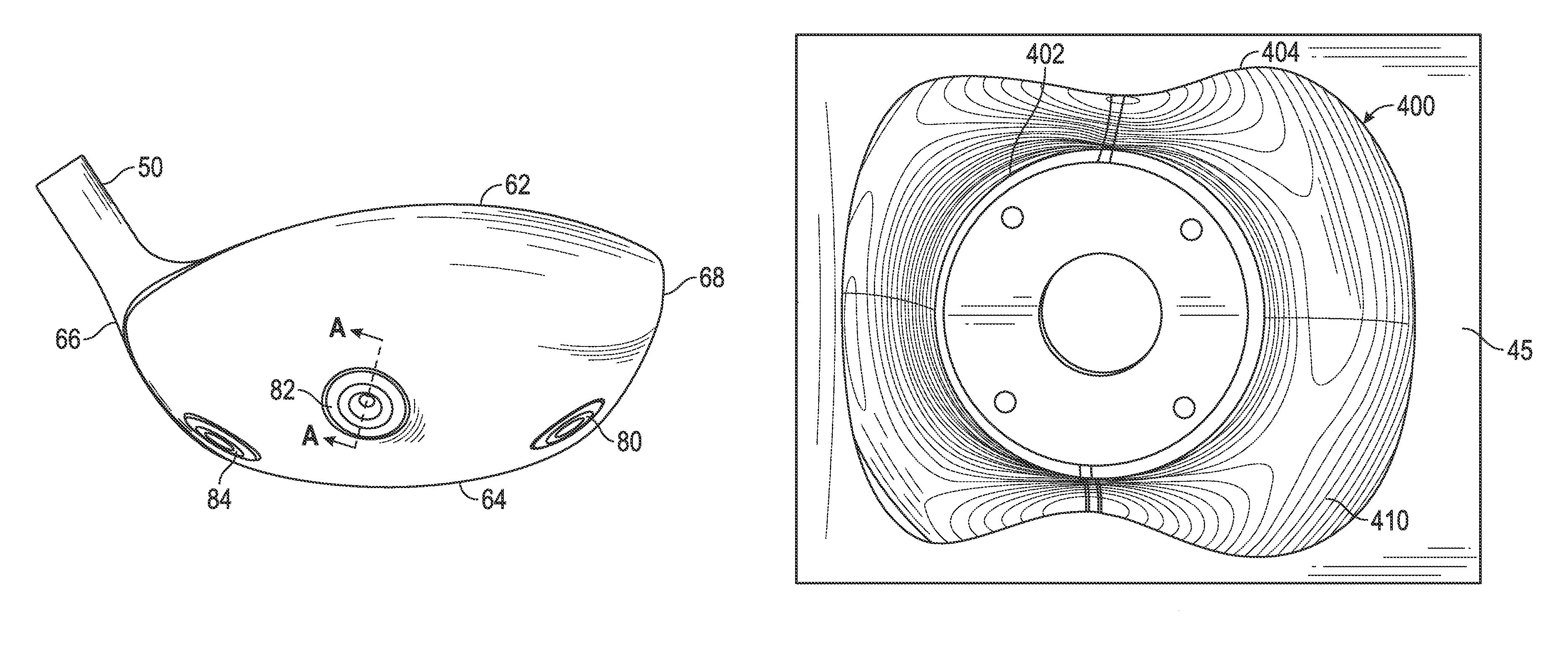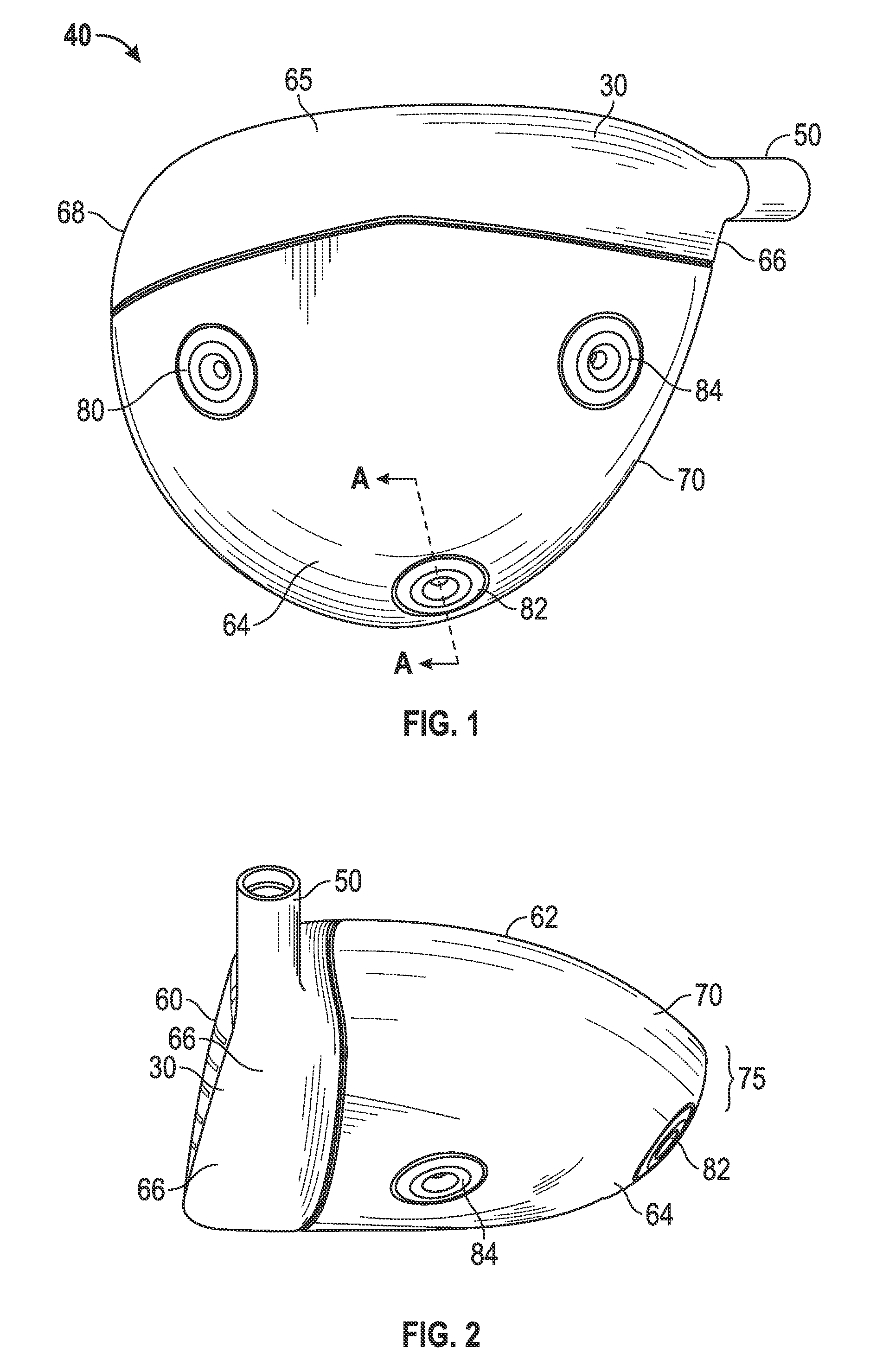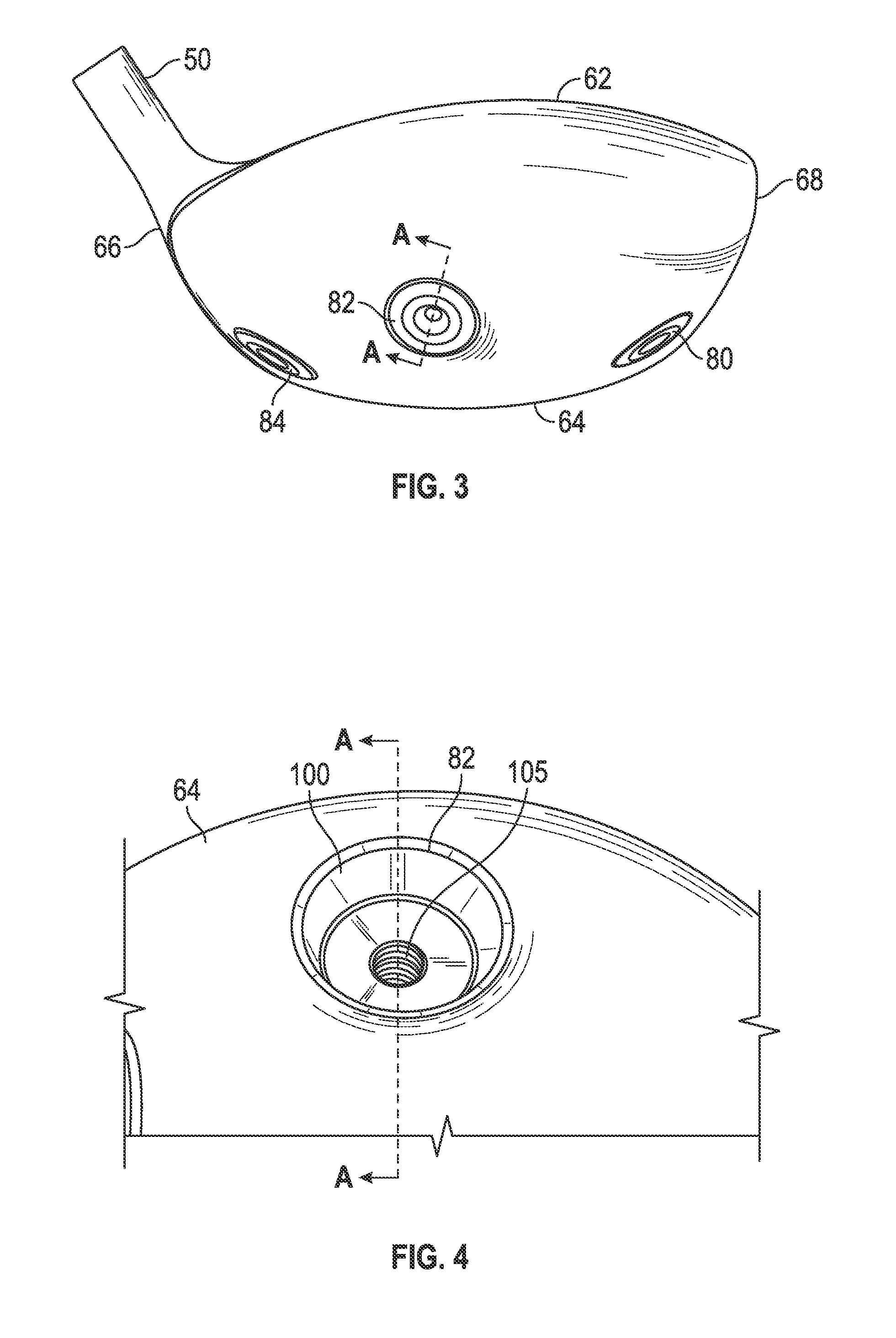Golf club head with composite weight port
a composite weight and golf club technology, applied in the field of golf club heads, can solve the problems of reducing distance, increasing dispersion, and reducing the effect of dispersion, and achieve the effect of improving the center of gravity and the moment of inertia characteristics
- Summary
- Abstract
- Description
- Claims
- Application Information
AI Technical Summary
Benefits of technology
Problems solved by technology
Method used
Image
Examples
Embodiment Construction
[0051]The present invention is generally directed to a golf club head with one or more weight ports that are formed in a composite sole or a composite sole patch and house removable weight inserts. In the preferred embodiments, the one or more weight ports are integrally formed in the sole or body patch.
[0052]Views of the preferred embodiment of the present invention are shown in FIGS. 1-5. The golf club head 40 shown in FIGS. 1-3 has a hollow interior 90, shown in FIG. 5, and is generally composed of a face component 30 comprising a face 60, a face extension 65, and a hosel 50, and an aft body 70 comprising a crown 62 and a sole 64 having three weight ports 80, 82, 84. In alternative embodiments, the golf club head 40 may have one, two, or more than three weight ports. The club head 40 also may optionally have a ribbon, skirt, or side portion (not shown) disposed between the crown 62 and sole 64 portions. The golf club head 40 is preferably partitioned into a heel section 66 neares...
PUM
 Login to View More
Login to View More Abstract
Description
Claims
Application Information
 Login to View More
Login to View More - R&D
- Intellectual Property
- Life Sciences
- Materials
- Tech Scout
- Unparalleled Data Quality
- Higher Quality Content
- 60% Fewer Hallucinations
Browse by: Latest US Patents, China's latest patents, Technical Efficacy Thesaurus, Application Domain, Technology Topic, Popular Technical Reports.
© 2025 PatSnap. All rights reserved.Legal|Privacy policy|Modern Slavery Act Transparency Statement|Sitemap|About US| Contact US: help@patsnap.com



